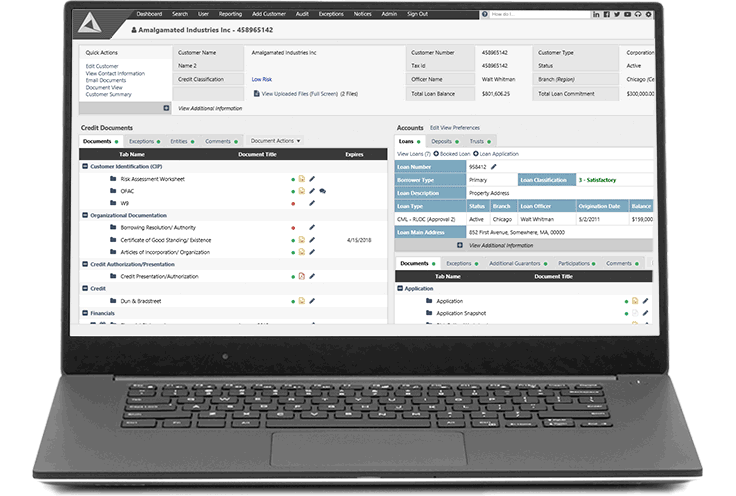The Rule: As Few Exceptions as Possible
Managing risk is one of the primary goals in the banking industry. One way for a financial institution to do so is to reduce its number of exceptions.
In this article, we’ll take a look at the basics of exception management and offer some tips for reducing risk.
What are Exceptions?
Exceptions often come in two forms: underwriting exceptions and policy exceptions. Underwriting exceptions deal with judgment calls based on credit scores and financial statement ratios. Policy exceptions, which are the focus of this article, are procedural errors in either documentation or transaction processing.
Why Do Institutions Track Exceptions?
Of course, exceptions can range from minor to major and impact institutions in various forms. Identifying and managing exceptions, obviously, is part of regulatory compliance, but the implications go deeper than that. When viewed as a whole and analyzed for patterns, they can indicate inefficiencies, identify training issues, help project budget and staffing needs, and even play a role in evaluating the performance of individual loan officers.
Best Practices for Tracking Document-Related Exceptions
For sometime now, many institutions have turned to tickler systems to keep track of document-related exceptions. Ticklers can be linked to a variety of documents, ranging from financial statements to insurance records. Many institutions still use a manual, paper-based tickler system. Alogent offers an electronic tickler system, which is significantly more efficient than manual ticklers.
An electronic application should combine exceptions on a customer’s account and generate one letter, streamlining your process. Reports on several levels (individual, supervisory, etc.) will assist you in keeping missed exceptions to a minimum.
Going Beyond a Tickler System
For a bank or credit union to thrive in today’s fast-paced, and often real-time environment, it pays to implement an automated system for tracking exceptions. Electronic document management systems, such as AccuAccount, typically offer both exception management and integrated document management within one comprehensive system.

When shopping for this type of powerful and time-saving tool, look for a system that will track loans, exceptions, and customer information. Click here to learn more about the advantages of implementing a document and exception management system, like AccuAccount.
Reduce Risk with Better Tracking
As long as humans are involved in any process, errors are bound to occur. However, it’s in the best interest of financial institutions to minimize errors and reduce risk, optimize operations, and maintain high levels of customer service. With tickler (exception) and document management systems, your institution can get one step closer to minimizing risk.
Contact us for more and to see a demo
Be the first to know! Click below to follow us on LinkedIn for news and content updates!

